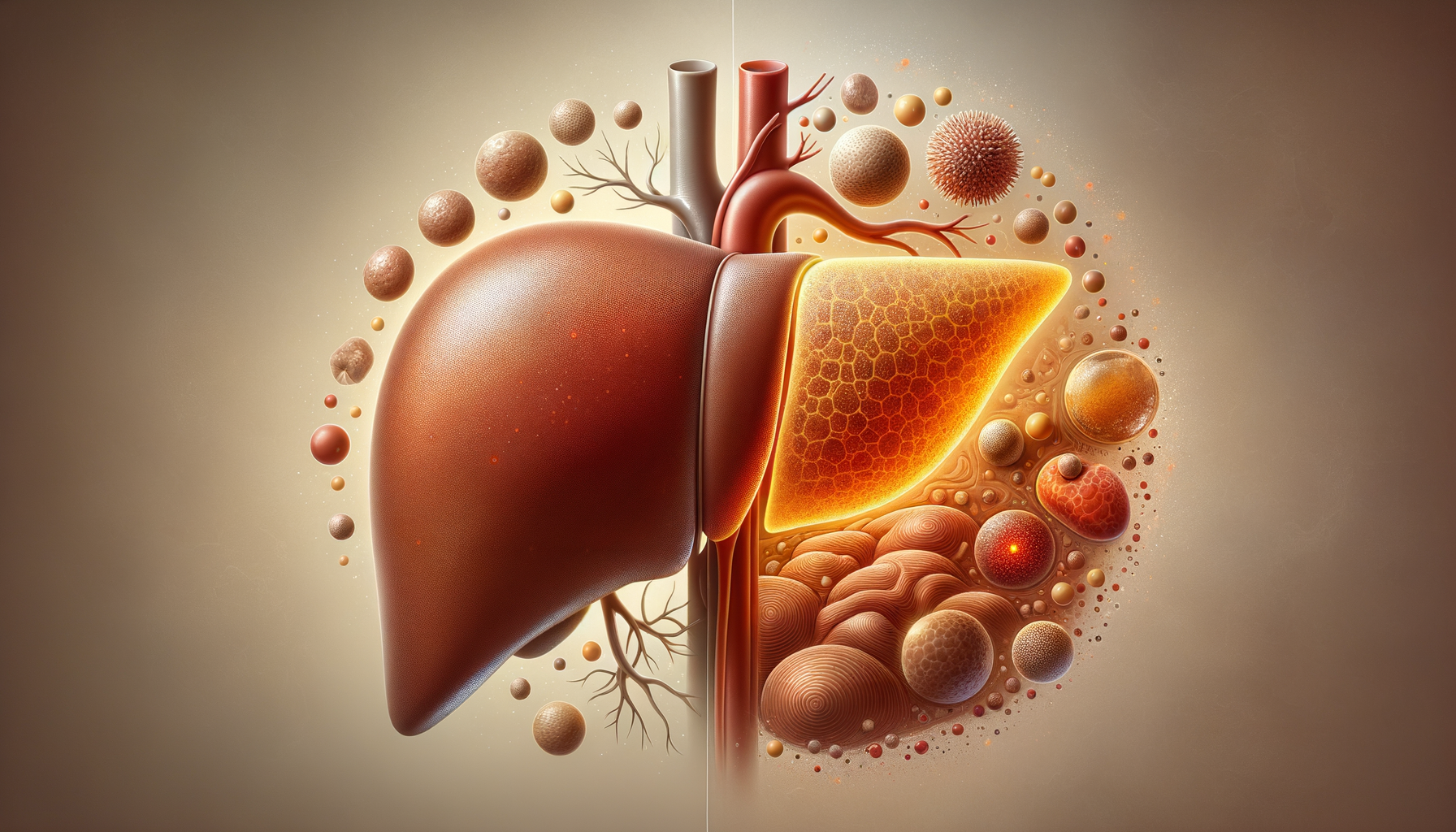Understanding Fatty Liver Disease
Fatty liver disease, often referred to as hepatic steatosis, is a condition characterized by the accumulation of fat in the liver. While a small amount of fat in the liver is normal, excessive fat can lead to inflammation and damage. This condition is increasingly common, affecting a significant portion of the population globally. Understanding the nature of fatty liver disease is crucial for prevention and management.
There are two primary types of fatty liver disease: non-alcoholic fatty liver disease (NAFLD) and alcoholic fatty liver disease. NAFLD is the most common type and is not related to alcohol consumption. It is often associated with obesity, type 2 diabetes, and metabolic syndrome. On the other hand, alcoholic fatty liver disease is directly linked to excessive alcohol intake.
The liver, being one of the largest organs in the body, plays a vital role in processing nutrients, filtering blood, and fighting infections. When fat accumulates in the liver, it can disrupt these essential functions, potentially leading to severe liver damage or cirrhosis if left unchecked. Therefore, raising awareness about this condition is imperative for public health.
Symptoms and Diagnosis of Fatty Liver Disease
Fatty liver disease is often termed a “silent” condition because many individuals do not exhibit symptoms, especially in its early stages. However, as the disease progresses, some symptoms may become apparent. Common signs include fatigue, abdominal discomfort, and an enlarged liver. In more severe cases, individuals may experience jaundice, swelling in the legs, and confusion.
Diagnosing fatty liver disease typically involves a combination of medical history evaluation, physical examination, and diagnostic tests. Blood tests can reveal liver enzyme levels, while imaging tests like ultrasound, CT scans, or MRI can help visualize fat accumulation in the liver. In certain cases, a liver biopsy may be necessary to assess the extent of liver damage.
Early detection is crucial for effective management and to prevent progression to more serious liver conditions. Regular health check-ups and liver function tests can aid in early diagnosis, especially for those at higher risk due to factors like obesity or alcohol use.
Causes and Risk Factors
The development of fatty liver disease is influenced by a variety of factors. For non-alcoholic fatty liver disease, the primary causes include obesity, insulin resistance, and high levels of fats in the blood. These conditions are often interlinked, contributing to the development of metabolic syndrome, which significantly raises the risk of NAFLD.
Genetics also play a role; some individuals may be predisposed to fatty liver disease due to hereditary factors. Additionally, rapid weight loss and certain medications can contribute to fat accumulation in the liver.
Alcoholic fatty liver disease, as the name suggests, is primarily caused by excessive alcohol consumption. The liver processes alcohol, and excessive intake can lead to fat buildup and liver inflammation. Other risk factors include poor diet, sedentary lifestyle, and certain medical conditions like polycystic ovary syndrome (PCOS) and sleep apnea.
Understanding these causes and risk factors is essential for prevention and developing targeted interventions to reduce the incidence of fatty liver disease.
Prevention and Lifestyle Modifications
Preventing fatty liver disease largely revolves around lifestyle modifications. For non-alcoholic fatty liver disease, maintaining a healthy weight is crucial. This can be achieved through a balanced diet rich in fruits, vegetables, whole grains, and lean proteins. Reducing the intake of saturated fats, sugars, and processed foods can also help manage weight and reduce liver fat.
Regular physical activity is another cornerstone of prevention. Engaging in at least 150 minutes of moderate-intensity exercise per week can significantly improve liver health and reduce the risk of NAFLD. Activities such as walking, cycling, and swimming are excellent choices.
For those at risk of alcoholic fatty liver disease, limiting alcohol consumption is vital. Adhering to recommended alcohol intake guidelines can prevent liver damage and promote overall health.
These lifestyle changes not only help in preventing fatty liver disease but also contribute to overall well-being, reducing the risk of other health conditions like cardiovascular disease and diabetes.
Treatment and Management Strategies
Managing fatty liver disease involves a combination of lifestyle changes and medical interventions. The primary goal is to reduce liver fat, prevent progression to more serious conditions, and address any underlying health issues.
Lifestyle changes, as discussed earlier, form the foundation of treatment. Weight loss, a healthy diet, and regular exercise are essential components. In some cases, medical professionals may recommend medications to manage conditions like diabetes or high cholesterol that can contribute to liver fat accumulation.
For individuals with alcoholic fatty liver disease, abstaining from alcohol is crucial to halt liver damage and promote healing. Support groups and counseling can be beneficial for those struggling with alcohol dependency.
In severe cases, particularly when the liver is significantly damaged, more intensive treatments may be necessary. These can include liver transplants or participation in clinical trials for new therapies.
Overall, a comprehensive approach involving healthcare professionals, lifestyle modifications, and patient education is key to effectively managing and potentially reversing fatty liver disease.








